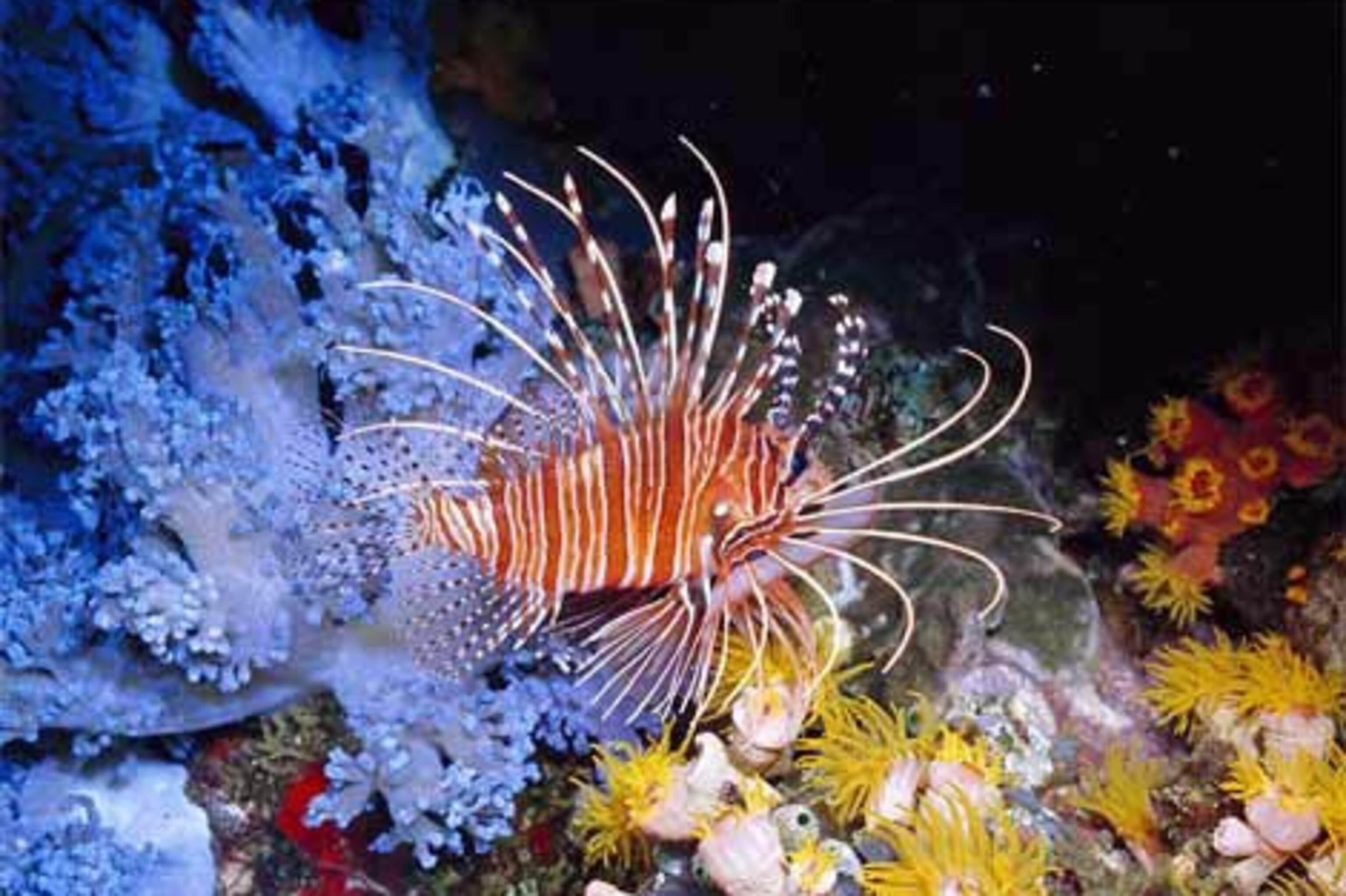
In the Bahamas, Invasive Fish May Become Dinner to Restore Ecosystem
Text by Alyson Sheppard; Photograph: Wolcott Henry, National Geographic Animals
Populations of lionfish, a football-size predatory fish native to the Indian and Pacific Oceans, are exploding in coral reefs in the Bahamas, threatening to destroy native fish schools and the local snorkeling, diving, and kayaking businesses.
“With the quantities of lionfish that we’ve found in our waters and the amount of food they consume, it has the potential of really collapsing our commercially important species—our fishing industry in general,” Lakeshia Anderson with the Bahamas Department of Fisheries told NPR. Lionfish can reportedly kill “three-quarters of a reef’s fish population in just five weeks.”
Originally, only about six of the fish escaped into the Gulf of Mexico in 1992 when Hurricane Andrew destroyed an aquarium in Florida. Since then, lionfish have been slowly dispersing into the Caribbean, and are now targeting the Bahamas, because they have no natural predators in the area.
“In 2005, the first lionfish showed up, and we didn’t pay much attention to it,” local reef fish researcher Mark Hixon told NPR. “The next year, we saw a few more. Then in 2007 there was a population explosion. There were so many lionfish around that they were eating the fish we were studying, and we had to start studying the lionfish. There was nothing else to do.”
Scientists suggest that Bahamians begin hunting and eating lionfish in large quantities until the ecosystem has time to adapt and balance out the fish populations.
Read the NPR story here.
Read the NOAA account here.
Watch an animated map of the invasion from the USGS here.
Related Topics
Go Further
Animals
- Orangutan seen using plants to heal wound for first timeOrangutan seen using plants to heal wound for first time
- What La Palma's 'lava tubes' tell us about life on other planetsWhat La Palma's 'lava tubes' tell us about life on other planets
- This fungus turns cicadas into zombies who procreate—then dieThis fungus turns cicadas into zombies who procreate—then die
- How can we protect grizzlies from their biggest threat—trains?How can we protect grizzlies from their biggest threat—trains?
Environment
- What La Palma's 'lava tubes' tell us about life on other planetsWhat La Palma's 'lava tubes' tell us about life on other planets
- How fungi form ‘fairy rings’ and inspire superstitionsHow fungi form ‘fairy rings’ and inspire superstitions
- Your favorite foods may not taste the same in the future. Here's why.Your favorite foods may not taste the same in the future. Here's why.
- Are the Great Lakes the key to solving America’s emissions conundrum?Are the Great Lakes the key to solving America’s emissions conundrum?
- The world’s historic sites face climate change. Can Petra lead the way?The world’s historic sites face climate change. Can Petra lead the way?
History & Culture
- Meet the ruthless king who unified the Kingdom of Hawai'iMeet the ruthless king who unified the Kingdom of Hawai'i
- Hawaii's Lei Day is about so much more than flowersHawaii's Lei Day is about so much more than flowers
- When treasure hunters find artifacts, who gets to keep them?When treasure hunters find artifacts, who gets to keep them?
Science
- Why ovaries are so crucial to women’s health and longevityWhy ovaries are so crucial to women’s health and longevity
- Orangutan seen using plants to heal wound for first timeOrangutan seen using plants to heal wound for first time
Travel
- A slow journey around the islands of southern VietnamA slow journey around the islands of southern Vietnam
- Is it possible to climb Mount Everest responsibly?Is it possible to climb Mount Everest responsibly?
- 5 of Uganda’s most magnificent national parks
- Paid Content
5 of Uganda’s most magnificent national parks